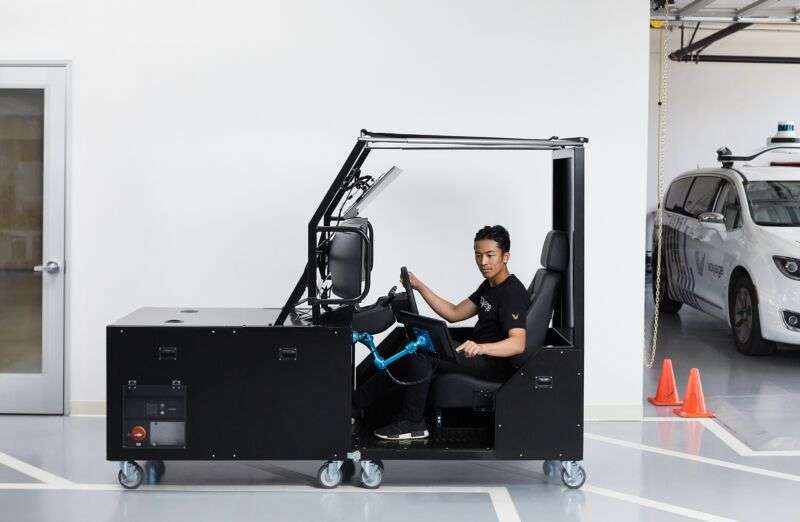
This self-driving startup built a “car without wheels” for remote driving
Voyage pulled the curtain back on its system for remote driving. …
 reader comments
reader comments
33 with 26 posters participating, including story author
The ideal self-driving car would drive itself all the time, in all situations. But achieving that goal in practice is difficult—so difficult, in fact, that most self-driving companies have provisions for human backup to help cars get out of tricky or confusing situations.
But companies are often secretive about exactly how these systems work. Perhaps they worry that providing details—or even admitting they exist—will cast their self-driving technology in an unflattering light.
So it was refreshing to see the self-driving startup Voyage unveil its remote driving console as if it was announcing a major new product—which, in a sense, it is. Voyage didn’t just create software that allows a remote operator to give instructions to a self-driving car—it built a physical “Telessist Pod” where a remote driver sits to control the vehicle.
Meet the Telessist pod
“For all of this to work safely, it had to basically be a car without wheels,” Voyage CEO Oliver Cameron told me in a Thursday phone interview. “It had to have a real steering wheel, real pedals, real automotive-grade connectors, and real automotive-grade ECUs.”
Voyage’s engineers built a “car without wheels” because they wanted to mirror the experience of driving a real car as closely as possible.
“If you try to do it with a gaming steering wheel, you don’t get the force feedback” you get with a real car, Cameron said. “It’s impossible to drive reliably like that. It’s so unsafe.”
Remote Voyage drivers sit in a metal cage the size of a golf cart. There’s a steering wheel, gas
Continue reading – Article source




